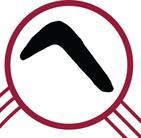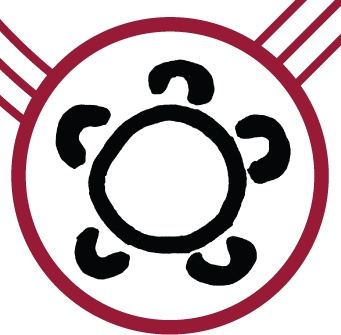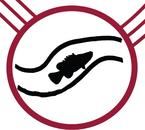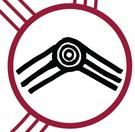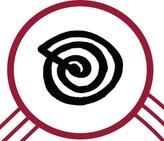The 8 Aboriginal Ways of Learning is a pedagogy framework for embedding Australian Indigenous perspectives into the classroom by emphasising Indigenous learning techniques across all subjects. The framework was developed by the James Cook University School of Indigenous Studies, in collaboration with the Western New South Wales Regional Aboriginal Education Team and DET staff in 2007-2009. It postulates that Indigenous perspectives and knowledges in the classroom are not about introducing “indigenised content”, but rather by practicing a pedagogy informed by “Indigenous processes” of knowledge transmission and identity.
The 8 way learning model explained at the Australian Indigenous College
Dr Karen Martin, a Noonuccal woman, NAIDOC Scholar of the Year 2008 and Associate Professor in the School of Education and Professional Studies at Griffith University unpacks how a culturally-informed pedagogy informed by means by speaking of “ways of knowing, ways of doing, ways of being and ways of valuing”.
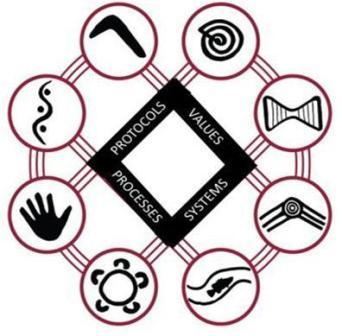
The 8 Aboriginal Ways of Learning pedagogical framework highlighting the connections to axiology, ontology, epistemology and methodology.
The 8 Aboriginal Ways of Learning therefore is quite a unique approach linking pedagogy with with:
- axiology – Indigenous ways of valuing, in particular particular cultural protocols, systems and processes
- ontology – Indigenous ways of being, in particular cultural protocols of behaviour
- epistemology -Indigenous ways of knowing, in particular cultural protocols such as initiation
- methodology – Indigenous ways of doing, such knowledge transmission through storytelling
What makes the 8 Ways pedagogical framework so compelling in the Australian main school context is that it is informed by a large overlap between Indigenous and non-Indigenous learning processes. There is much common ground in the value to all students of teachers including:
Story sharing:
Great teachers are storytellers that can also teach through narratives and songs. Sharing stories is also an important tool to connect with each other.
Learning maps:
The visualisation of pathways of knowledge is also called concept mapping. According to the latest Hattie Effect Size update, there is good evidence that the development of learning maps is among the most effective teaching practice.
Non-verbal learning:
Six out of the seven learning styles are non-verbal and include the kinesthetic and interpersonal approaches. In the words of the 8 Ways pedagogical framework, “we see, think, act, make and share without words“.
Symbols and images:
Providing visual cues, including symbols and colour-codes in learning routines can significantly help students with hearing impairment and social communication difficulties such as Autism Spectrum Disorder. This point addresses that learning is often visual and supported by objects, images, symbols, signs, art and metaphors to explain concepts and content.
Land links:
Great teachers make teaching content relevant by connecting it to the world in which their students live. This includes teaching lessons about the local environmental, highlighting traditional knowledge and connection to the land, including climate, fauna and flora, as well as the history about a place. The aspect of land links is also an important factor for training students’ ability of acute observations as required in Science and often best taught in nature. Land linkst is arguably an important part of teaching Sustainability, one of three cross-curriculum priorities in the Australian Curriculum.
Non-linear:
Non-linear thinking can be translated as Critical and Creative Thinking, a key general capability to be developed in the Australian Curriculum. This is because lateral thinking or what we also call “thinking outside the box” is the foundation of innovation. In the words of the 8 Ways pedagogical framework, “we put different ideas together and create new knowledge“.
Deconstruct and reconstruct:
On the one hand this pedagogy describes the gradual release of responsibility instructional framework, where teachers first unpack new knowledge with the students by means of modelling and scaffolding, then encourage shared and individual practice. It also emphasises the importance of holistic knowledge, always anchoring new content in prior student knowledge, by “work[ing] from wholes to parts“.
Community links:
This pedagogy is an important aspect of social pedagogies that emphasise the importance of community engagement and authentic audiences to bolster student engagement. Arguably, community links goes one step further by applying learning for community benefit, or to paraphrase UNESCO to “empower disadvantaged communities through innovative education“.
The 8 Ways pedagogical framework is hardly radical, allows for broad practical applications in a wide range of local school contexts and does not prescribe any particular or commercial classroom materials and training requirements. It also sidesteps possible constraints in curriculum content choices, which prior to the introduction of the Australian Curriculum and in particular the cross-curriculum priority Aboriginal and Torres Strait Islander histories and cultures had the potential to constrain Indigenous education in mainstream schools and classes. It also recognises that every school community and every local Indigenous culture is different, and that one-size-fits-all prescriptions are problematic and limiting. Rather than being explicit about teaching content (e.g. Indigenous lesson units by commercial providers such as sharingculture.com), classroom and school management styles (e.g. Stronger Smarter developed by Chris Sara), particular teaching styles (e.g. Direct Instruction advocated by Noel Pearson), or conceptual frameworks for constructing individual teaching and learning episodes (e.g. Uncle Ernie’s framework), the 8 Aboriginal Ways of Learning approach promotes culturally sensitive and informed ways of teaching and learning practically anything in ways that benefit all students.
The challenges with such an open, inclusive, and non-commercial pedagogical framework are in professional adoption and meaningful translation and applications. The 8 Ways is only one of an ever growing number of culturally-informed pedagogical approaches advocated to Australian teachers, and while not necessarily in conflict with the others risks of being only superficially adopted and watered-down in practice to the point where it would make little difference to Indigenous students. Without any specific units, class material, applied recommendations in areas such as EAL/D, it will be easy for teachers to endorse it in theory but not in practice. This is even more likely within the non-commercial context of this framework, as it will not be actively marketed by consultants for professional development to schools.
The AITSL professional teacher standards 1.4 (strategies for teaching Aboriginal and Torres Strait Islander students) and 2.4 (understand and respect Aboriginal and Torres Strait Islander people to promote reconciliation between Indigenous and non-Indigenous Australians) frame much of the professional classroom practice in relation to Indigenous students, and teaching Indigenous perspectives and understanding. The 8 Ways approach has the potential to directly inform the teaching practice by offering a rich, culturally-informed framework to design teaching and learning episodes and activities. While not supporting this process with specific teaching material or recommendations for lessons on Indigenous people, culture, country/places which would inform teaching about the reconciliation process between Indigenous and non-Indigenous Australians, the 8 Ways framework supports meaningful cross-cultural dialogue and shared learning experiences.
Personally, I find the comprehensive nature and non-prescriptive approach of the eight interconnected pedagogies very appealing, because they can easily be to be applied across all curriculum areas. The are also an excellent starting point for discussing curriculum and pedagogy choices with the local Indigenous and non-Indigenous school community. This flexibility also ensures compatibility to work with any (future) version of the Australian Curriculum, across changing cross-curricular priorities, different whole-school approaches and communities, by offering pedagogical approaches that benefit all students and make real connections to local knowledges and practices.

